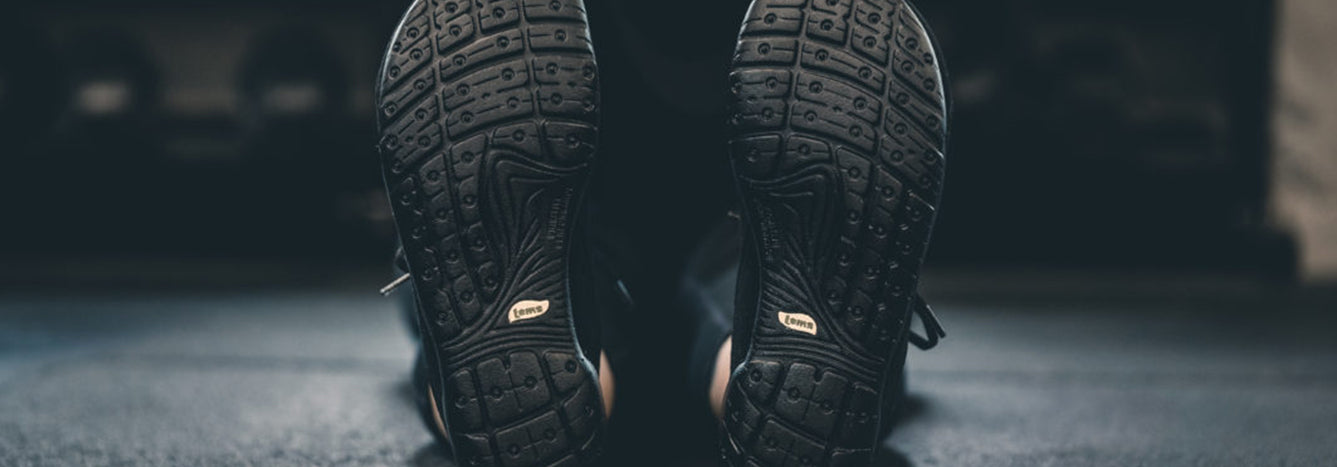Traditional shoes were not shaped around the shape of a human’s natural foot. Early hunters and gatherer obviously went barefoot or started to shroud the foot in floppy animal hides to protect the skin from the elements.
As agriculture came to rise, field workers were barefoot to plant and pull crops, mostly because they couldn’t afford shoes. But those of royalty and high class began to use shoes as a showpiece of wealth.
And just as women wore corsets to shape the body in what later was seen as an unnatural way, citizens of means wanted to wear shoes that made them look slimmer, fancier, higher—anything but barefoot.
“Early shoes were designed around disfiguring the foot,” explains Lems founder and designer Andrew Rademacher. “Royalty wanted to separate themselves from the lower classes, hence high heels. If they could physically walk up taller it would distinguish them from peasants.”
However, even as culture evolved and shoes were made for more active and leisure pursuits, the narrow, pointed look and feel remained engrained. For example, the first real running shoes were track “spikes” made for sprinters like Jesse Owens, who ran on gravel. The racing cleats didn’t follow the shade of the natural foot; they were designed to be narrow and tight, and forced the feet conform to an unnatural squeezed toe box.

BUT A SNUG FIT MADE SENSE, RIGHT?
Athletes didn’t want to run out of their shoes during a high-impact sport like track. But later, when endurance runners came on the scene for longer disciplines up to the 26.2-mile marathon distance, athletic shoes didn’t seem to morph intelligenty for the purpose.
“Runners and marathoners would get these black-and-blue toe nails, bunions, with curled-up and overlapping toes. But it doesn’t have to be that way. Those are just signs that your shoes are improperly fitting,” Rademacher says. “It’s ancient how we’ve been designing the fit of shoes, and only just recently that we realized that we need to shape shoes around the human foot and that it’s healthy to run with toes spread apart.”
Why do so many people love to walk around the house barefoot or go out in flip-flops whenever they can? “It’s toe freedom,” he explains. “People don’t think about why their feet are so comfortable in flip flops. It’s because we have deformed our feet as a culture.”
But it’s never too late to go back to being natural in how we choose to cloak our feet, whether we’re at the office, walking around town or taking on a demanding sport like distance running.

REMEMBER, YOUR BIG TOE IS YOUR BEST FRIEND.
That digit in particular really wants to remain in a straight position for proper balance and proprioception of the ground. For many females or people with a naturally narrow bone structure or smaller, lighter frame some traditional athletic shoes will allow for enough room. But many still squeeze big-boned feet where they shouldn’t. And that’s where a wide-base minimalist shoe like Lems saves the day—and your feet.
That said, if you regularly wear high heels, pointy dress shoes or sneakers with a high-stack heel (originally designed to shift impact with the ground and alleviate pain) it will take some time to transition to a barefoot-inspired shoe like Lems.
“With a shoe made for the natural foot, you do have to build up some strength and flexibility, because you’ll have a whole new range of motion where you have to depend on your feet, not the shoes, to do the work,” Rademacher says. “But when you have strength in your toes your foot is happier by the end of the day because it’s working the way it was intended to.”
He says many athletes, too, still believe that they can get a better workout when they are squeezed into a narrow shoe with a high heel. “I’ve heard shoes called painkillers for the foot. That might be, but you will suffer elsewhere, because all the impact shifts to other joints—the ankles, knees and hips.”
Rademacher’s favorite transition tactic? Just slow down for a bit in your new minimalist shoes. “That slower pace is what our bodies are meant for.”

